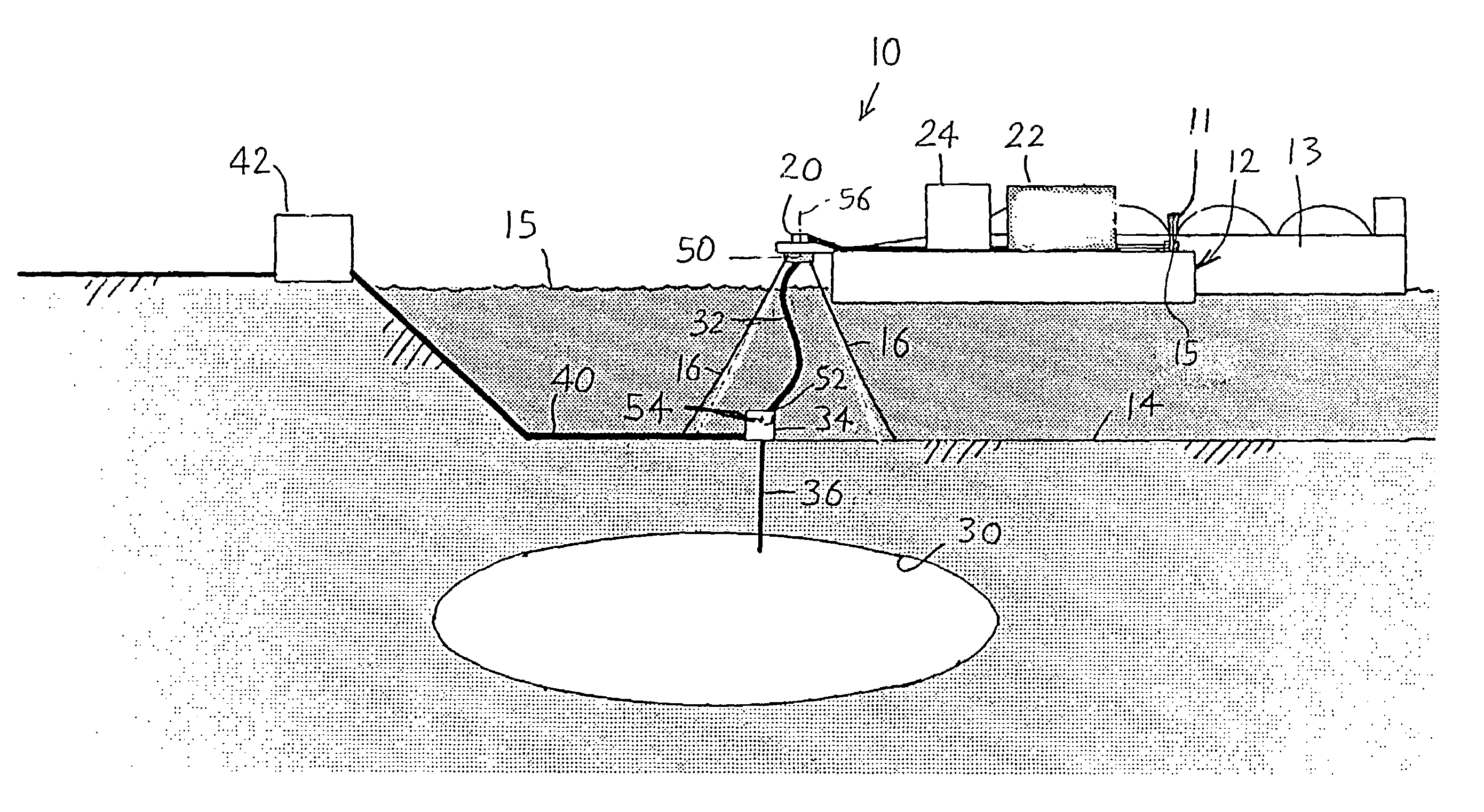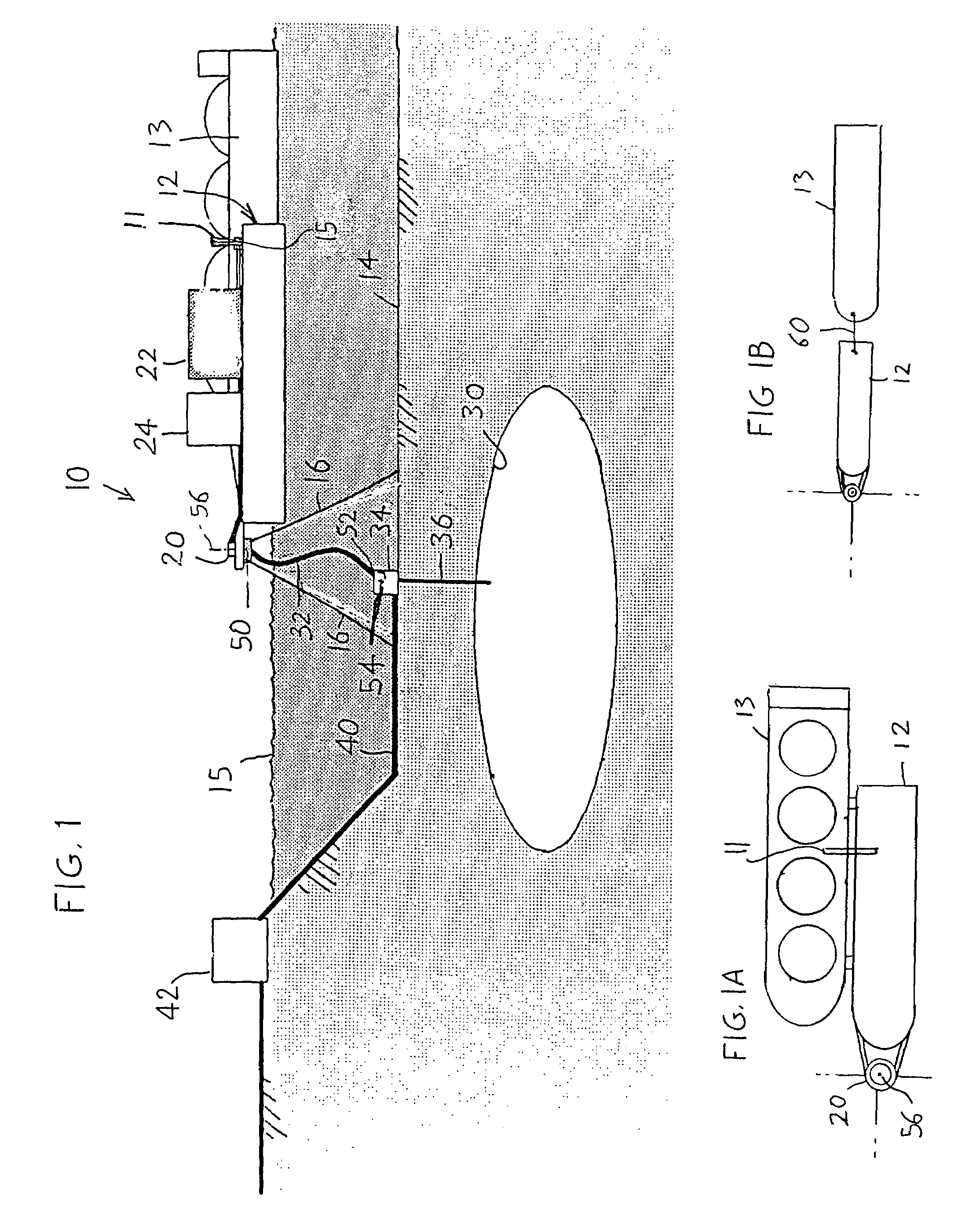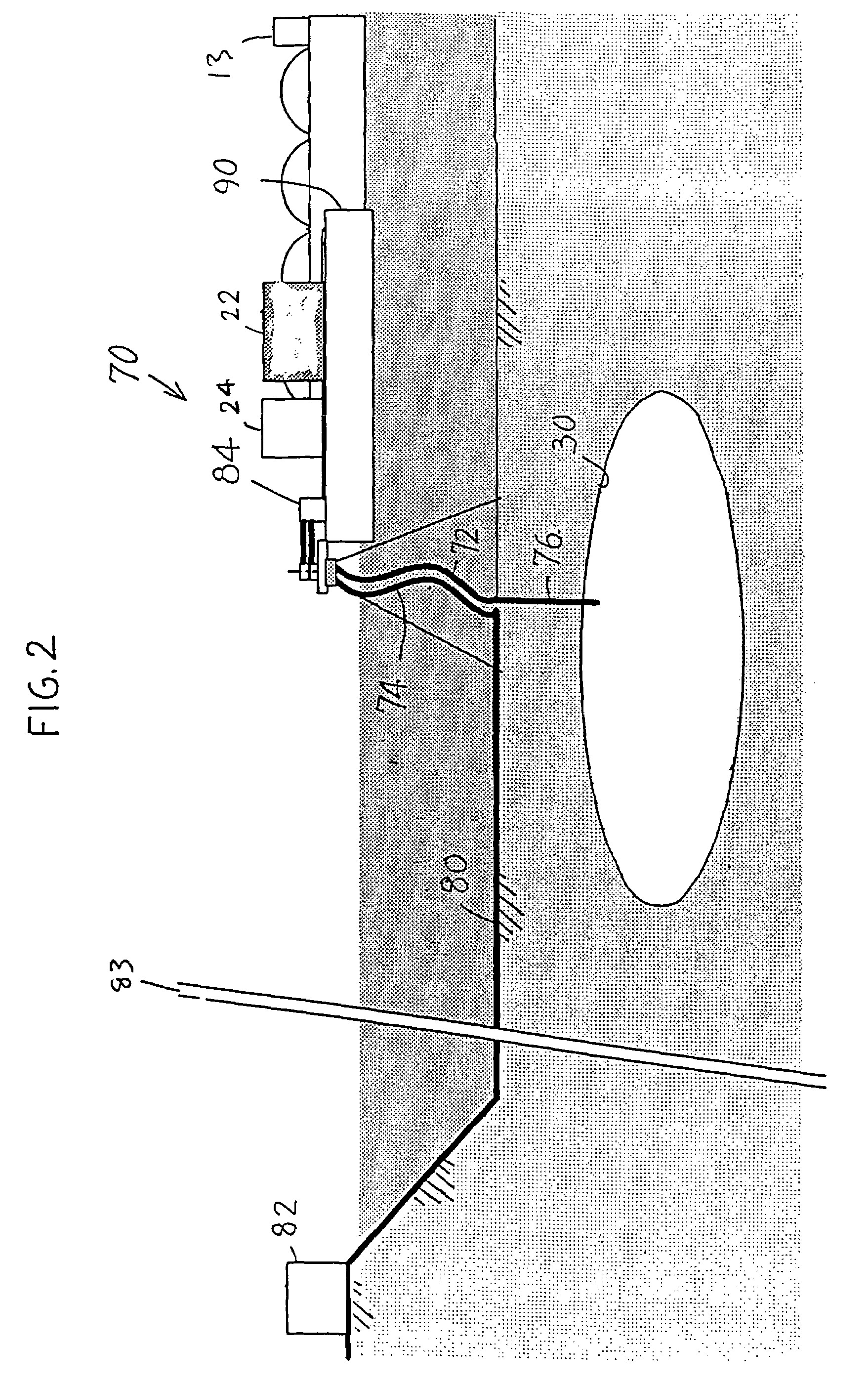Gas offloading system
a gas offloading and gas technology, applied in the direction of container discharge methods, special purpose vessels, packaged goods types, etc., can solve the problems of high fixed platform cost, difficult to moor a tanker to the platform, and high cost of fixed platform, so as to achieve the effect of easy passing
- Summary
- Abstract
- Description
- Claims
- Application Information
AI Technical Summary
Benefits of technology
Problems solved by technology
Method used
Image
Examples
Embodiment Construction
[0019]FIG. 1 illustrates an offloading and transfer station 10 that includes a weathervaning floating structure in the form of a single barge 12 (there could be more than one barge) that floats at the sea surface 15. The barge receives LNG through a coupling 15 and a loading arm 11 extending from midship of a tanker 13. The barge is moored to the seafloor 14 by chains 16 extending from a turret 20 mounted at the bow of the barge. The illustrated chains extend in catenary curves to the seafloor and along the seafloor to anchors. Preferably, the tanker is moored to the barge and they weathervane together. This allows the barge and tanker to move in unison and therefore remain close together in an open sea. A regas unit 22 (for heating LNG to produce gas) and an injection unit 24 for pumping the LNG or gas to a high pressure, are both located on the barge, and are used for injection of gas into an underground cavern 30 that lies under the sea. The regas unit usually transfers heat from...
PUM
| Property | Measurement | Unit |
|---|---|---|
| depths | aaaaa | aaaaa |
| temperature | aaaaa | aaaaa |
| current | aaaaa | aaaaa |
Abstract
Description
Claims
Application Information
 Login to View More
Login to View More - R&D
- Intellectual Property
- Life Sciences
- Materials
- Tech Scout
- Unparalleled Data Quality
- Higher Quality Content
- 60% Fewer Hallucinations
Browse by: Latest US Patents, China's latest patents, Technical Efficacy Thesaurus, Application Domain, Technology Topic, Popular Technical Reports.
© 2025 PatSnap. All rights reserved.Legal|Privacy policy|Modern Slavery Act Transparency Statement|Sitemap|About US| Contact US: help@patsnap.com



